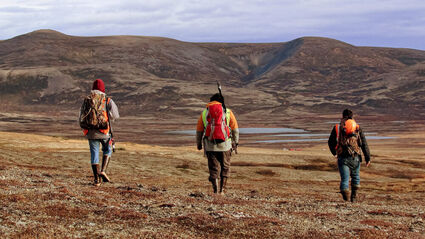Northern Dynasty stands firm behind FEIS
Prepared to face the continued challenges for a Pebble mine North of 60 Mining News – December 3, 2021
Last updated 12/30/2021 at 2:26pm

Pebble Limited Partnership
Once fully operational and profitable, Pebble Performance Dividend would distribute 3% of the net profits from the mine to registered Bristol Bay residents.
Northern Dynasty Minerals Ltd. Dec. 1 announced its statement regarding the Nov. 17 press release by the U.S. Environmental Protection Agency, in which the governmental agency extended the deadline regarding its intention to implement Section 404(c) of the Clean Water Act.
"While it is not yet known what action, if any, the EPA will finally take, we are cautiously optimistic about their commitment to consider new information that has become available since the 2014 Proposed Determination and to make science-based decisions," said Northern Dynasty President and CEO Ron Thiessen.
Reported mid-last month, the EPA stated it had set a timeframe for considering new information available to determine the next steps in the Bristol Bay Clean Water Act Section 404(c) process for the Pebble copper mine project in Southwest Alaska.
"We do not know which new information they may use in their decision, but we believe that the strong administrative record of the overwhelmingly positive Final Environmental Impact Statement of 2020 that was prepared by the U.S. Army Corps of Engineers should be an important part of it," Thiessen added.
As for its final purpose, the EPA has said the finalized CWA 404(c) determination would help protect the waters of the Bristol Bay region for the long term, which have been essential to commercial, subsistence, and recreational fisheries, as well as other activities that support Alaska Natives and communities in the area.
With the largest sockeye salmon fishery in the world, concerns regarding potential damages to the habitat, and ultimately, the fishing industry of which Bristol Bay hinges its economy upon could be harmed by Pebble.
In a statement communicated with media, the Pebble Limited Partnership wrote:
"The EPA's announcement that it wants to 'consider new information available' essentially recognizes the fact that we submitted an actual detailed mine plan and initiated the NEPA (National Environmental Policy Act) review process with the U.S. Army Corps of Engineers. This resulted in the publication of an EIS (Environmental Impact Statement) for the Pebble Project that shows it can be developed without harm to the Bristol Bay fishery while providing substantial benefits to the communities closest to the project. It is also worth noting that the EPA did not have this significant volume of detailed technical information when it took unprecedented action against the project. We will work to ensure this is fully understood by the EPA especially at a time when the nation will need the minerals Pebble could provide to help the country utilize more sources of renewable energy and is in line with the administration's climate change agenda."
Setting the politics aside, the Pebble Mine project advanced to the final stage of permitting would produce an estimated 320 million pounds of copper; 363,000 ounces of gold; 15 million lb of molybdenum; 1.8 million oz of silver; and 12,000 kilograms of rhenium annually over the first 20 years of mining.
Under the proposed 20-year mine scenario, the Pebble Mine would pay an estimated US$1.74 billion in fees, royalties, and taxes to the state of Alaska; US$490 million in taxes to the Lake & Peninsula Borough; and US$1.4 billion in federal taxes.
Under the expansion scenarios, this operation would pay roughly US$22 billion to the state; US$4 billion to the borough; and US$19 billion to the federal government over roughly a century.
"We echo recent comments from BHP and others that the global markets will need double the amount of copper in the next 30 years than it did in the past 30 years to facilitate a decarbonized economy. The U.S. has significant copper resources within its borders, all it needs to do is develop them," finished Thiessen.






Reader Comments(0)